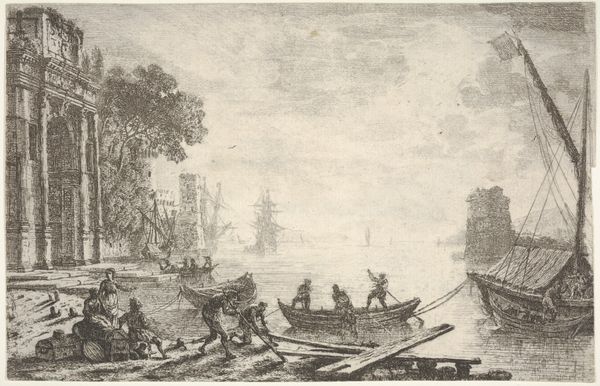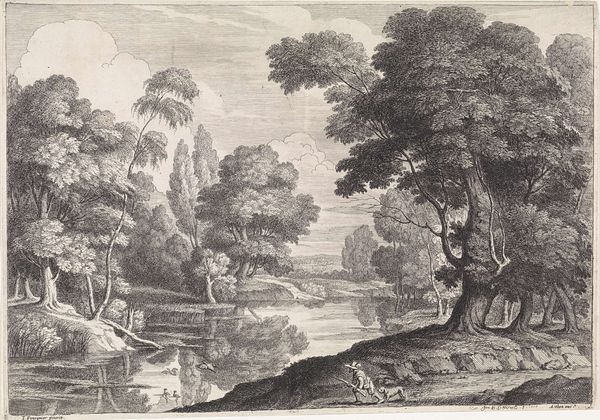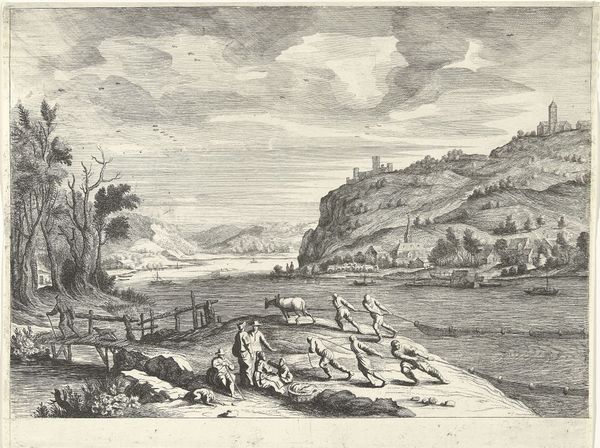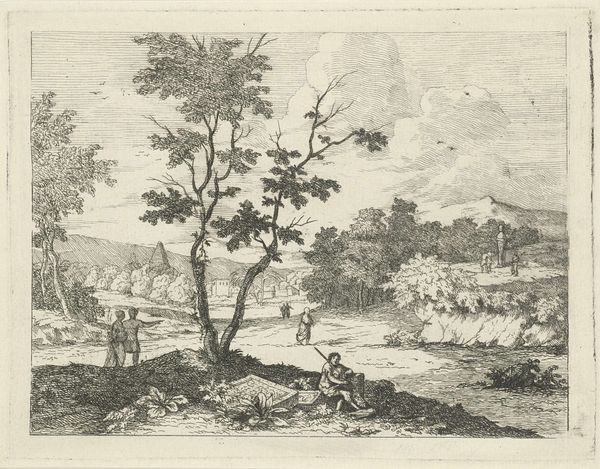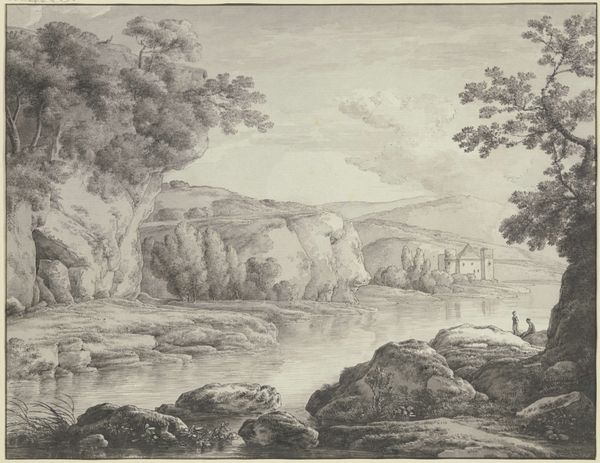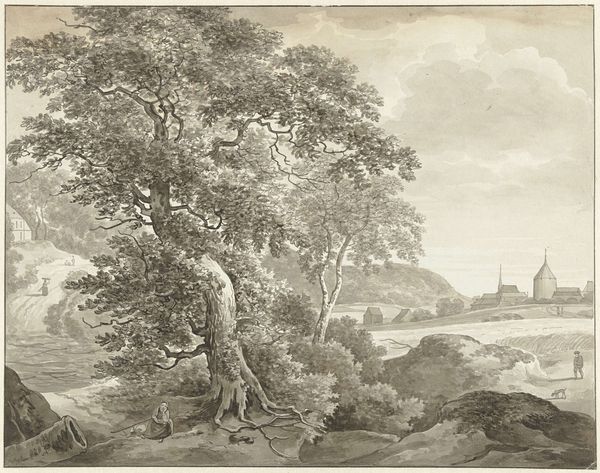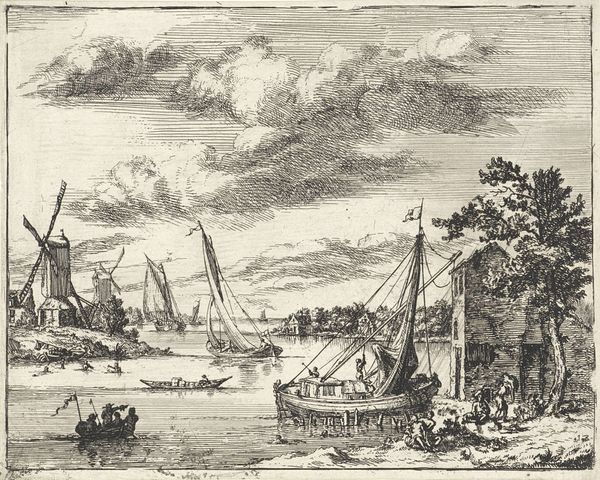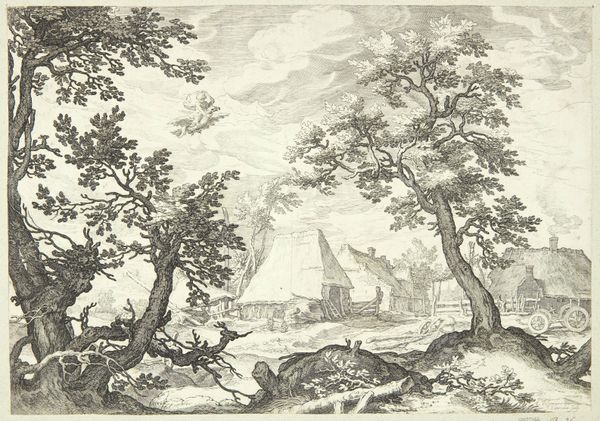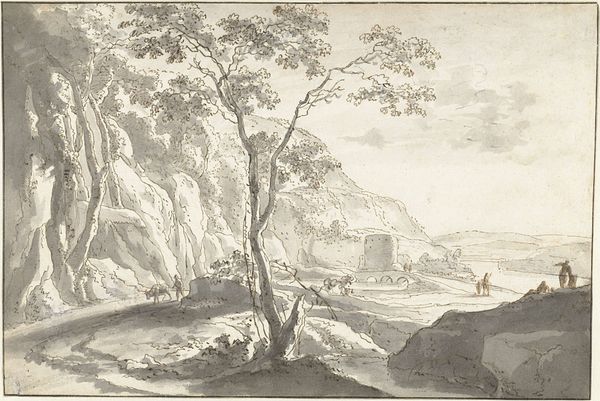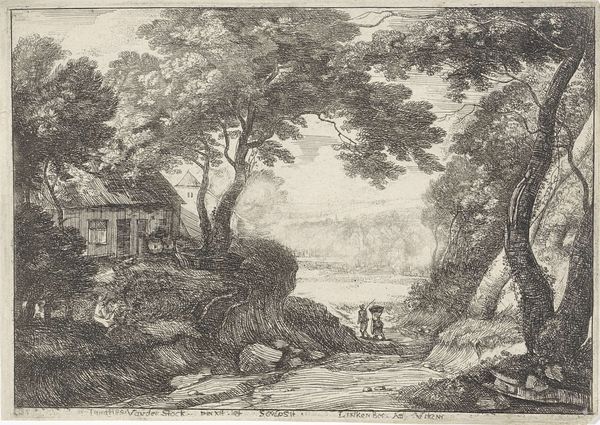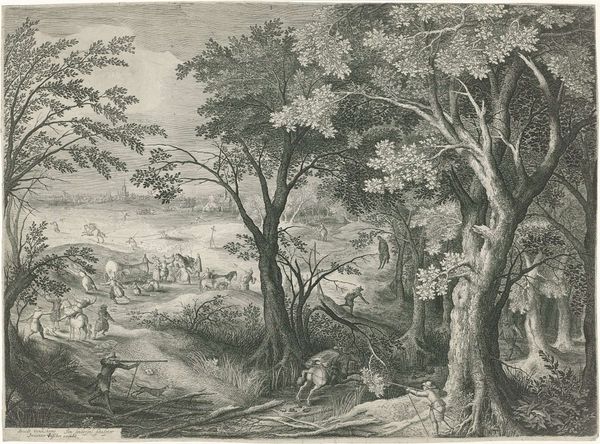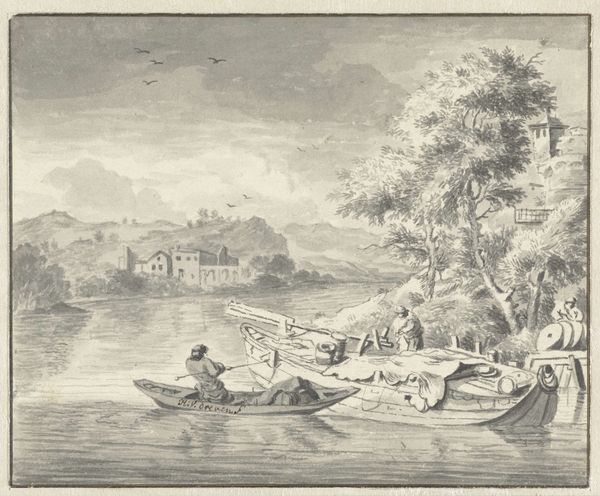
Dimensions: height 286 mm, width 382 mm
Copyright: Rijks Museum: Open Domain
Curator: This etching from 1774, entitled "Figuren bij een schuit in een berglandschap," is by Anthonij van der Haer. It shows figures near a boat in a mountainous landscape. Editor: It’s immediately striking— the light and shadow create such a dramatic scene. Almost theatrical, wouldn’t you say? The detailed figures feel as though they are a part of a staged composition within a sublime landscape. Curator: Indeed. Van der Haer was working in a period that idealized the pastoral, but through a very specific lens. The late 18th century was witnessing the birth of modern tourism, and the demand for picturesque scenes and landscapes fueled artistic production. This etching aligns with the tastes of the wealthy elite. Editor: You can really see the idealized representation you're talking about. Note how these working figures are peacefully framed, without the suggestion of true labor. It almost romanticizes their existence in a very detached, privileged way. The picturesque framing is the main agenda of this type of art. Curator: Precisely. These prints were made to be collected and viewed as beautiful objects, signifying their owner’s refined sensibilities and their connection to nature and classical ideals. Editor: Even the inclusion of those classical architectural ruins! They hint at a glorified past. It definitely adds to this impression of idealized leisure within nature that erases any potential for realistic historical conditions. Curator: Exactly. And in terms of production, the etching process itself allowed for wide dissemination of these images, reinforcing the ideologies and values embedded within the landscape genre across society. Editor: Which, of course, had political and social consequences, impacting how people perceived land use and ownership. Curator: Yes. So, while seemingly benign, works like these reveal much about the social and cultural landscape of the late 18th century and how artistic trends interacted with broader historical and political narratives. Editor: Right, analyzing the layers underneath art's aesthetic appeal can highlight uncomfortable but significant reflections about our culture.
Comments
No comments
Be the first to comment and join the conversation on the ultimate creative platform.
